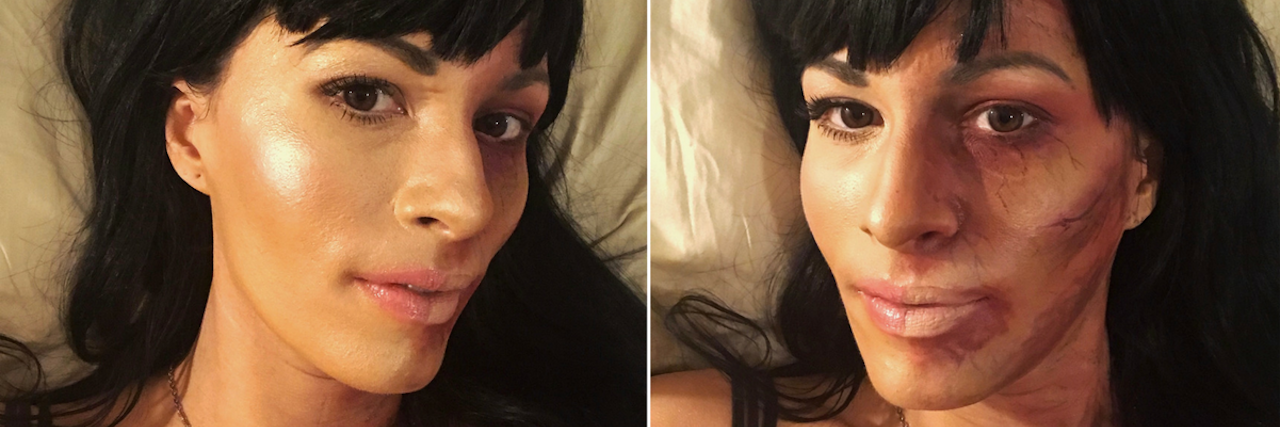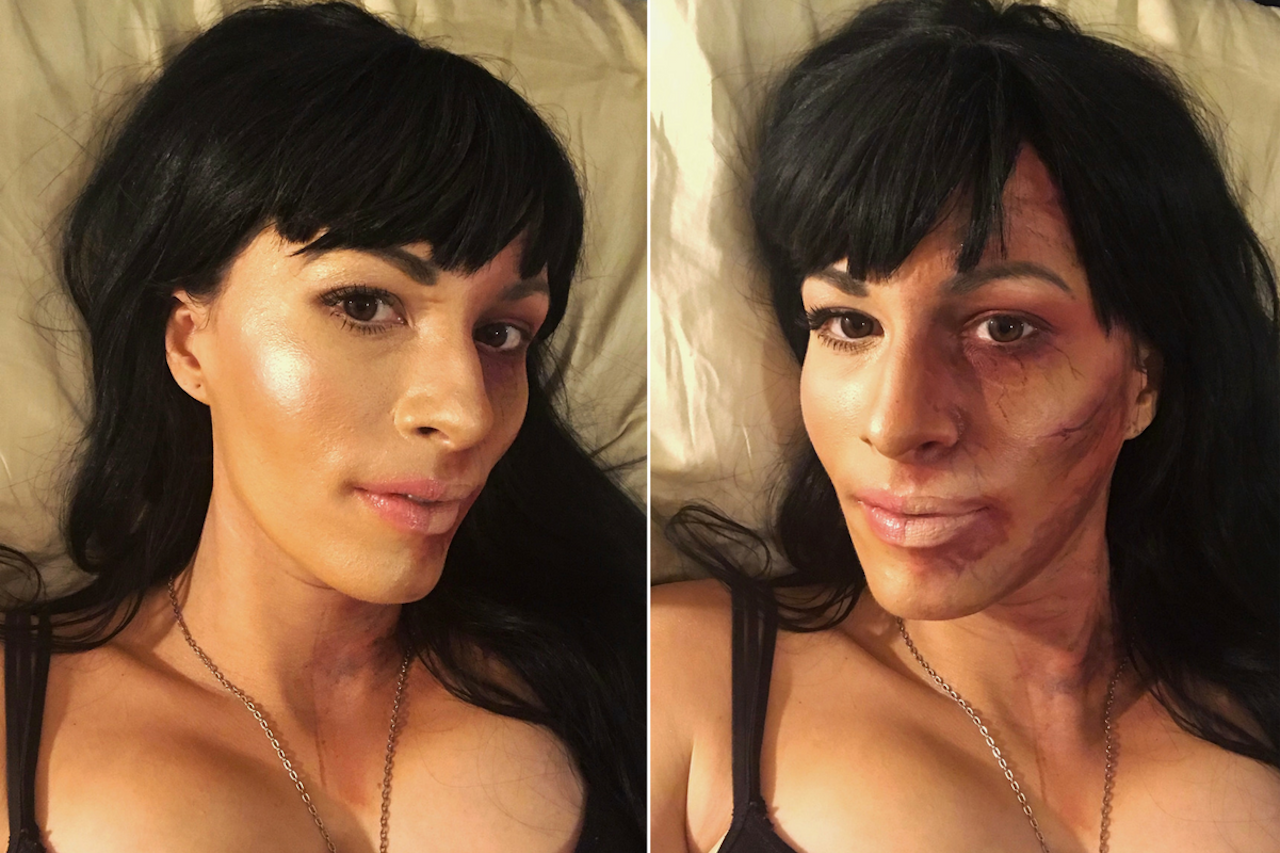I undertook a creative project that depicts the disparity between how one feels living with an invisible chronic illness, versus how imperceptible that experience is to the outside world. This incongruence presents many unique challenges that can often confound life with a chronic illness. This is especially true of the unspoken and spoken expectation that if you look good, you are feeling good.
Invisibility is a double-edged sword.
There are many benefits to invisibility. It maintains privacy about the health struggles I’m having. Disclosure of them are within my control at all times. On good days, I seamlessly blend into the world. On my bad days, I conserve a lot more energy for myself.
Invisibility is also harmful. It means my true experience is not known. If my struggles remain unseen and unheard, authenticity – which is essential for all healthy human connection – is lost. On bad days, my suffering is rendered even more invisible. If I’m not physically out in the world, no one knows I even left.
Breaking Through Invisibility
The first step is vulnerability. Disclosure is inevitable. Whether it be through requesting special needs, or opening up and sharing my experiences – disclosure always invokes anxiety. This anxiety stems from fears of being misunderstood. These fears are from years of being misunderstood.
Firstly, invisible illness can be met with skepticism or doubt…
“You look really great, you don’t look sick at all.”
“You’re too young to be sick.”
…your suffering trivialized…
“I’m tired today too, must be the weather.”
“Why don’t you just drink coffee?”
…your disclosure met with stigma and shame…
“That’s not a real disease, it’s just a waste bucket disease.”
“So you’re just going to give up on your life then?”
…blame…
“If you just got out of the house and went for a walk, you would feel a lot better.”
Don’t get me even started on the recommendations. You can see why invisibility feels so safe. A safe harbor from the siege of ignorance, however well-intended.
Conversations do not begin with invisibility. Change cannot be born there. The potential for change can only be found with visibility. To be vulnerable time and time again there. To continue these conversations time and time again. Until eventually, not one chronically ill person feels uncomfortable when they need to use that disability parking space, elevator or priority seating on a bus.
Invisible illness is everywhere. It’s been everywhere before you and I. It will be everywhere after us. Our experiences are woven into the same fabric of life as the healthy, and will always be. It’s time we feel apart of it.
The main message of my creative project was this:
Our diseases may be invisible, but our experiences are not.
We want to hear your story. Become a Mighty contributor here.


